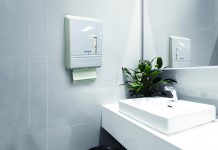In an ongoing bid to reduce the use of plastics across the supply chain, Bunzl is constantly investigating new ways to improve its material efficiency. As a term, ‘material efficiency’ applies to being efficient with the materials used in both the packaging around products, as well as products that are packaging such as food containers and bags.
While the overall aim of material efficiency is to reduce the amount of material used in product packaging, especially in things like single-use plastics, a materially efficient product should also be longer-lasting to reduce the need for replacements and limit unnecessary production. According to Felicity Kelly, Bunzl’s Head of Sustainability, the focus on material efficiency comes as the organisation conscientiously works toward meeting the Australian Packaging Covenant Organisation’s (APCO) 2025 National Packaging Targets.
“[We’re] increasing recyclable and renewable materials across all of our packaging by designing high-quality products with increased durability to increase life span,” she says. “We’re also working with our customers to ensure they’re using products in the right way and at the correct use rate.”
In other areas, material efficiency has meant simply getting rid of plastic and packaging altogether. “You can’t always use recycled or compostable materials because they don’t always suit the use case,” says Kelly.
Material efficiency can be most effective on a seemingly smaller scale as well. In 2023, the plastic packaging around Kwikmaster’s 3DHex Heavy Duty Wipes were redesigned and tightened, a change which has projected reductions of over 30kg of plastic annually. Bunzl is constantly looking at primary and secondary packaging and evaluating whether both are required.










